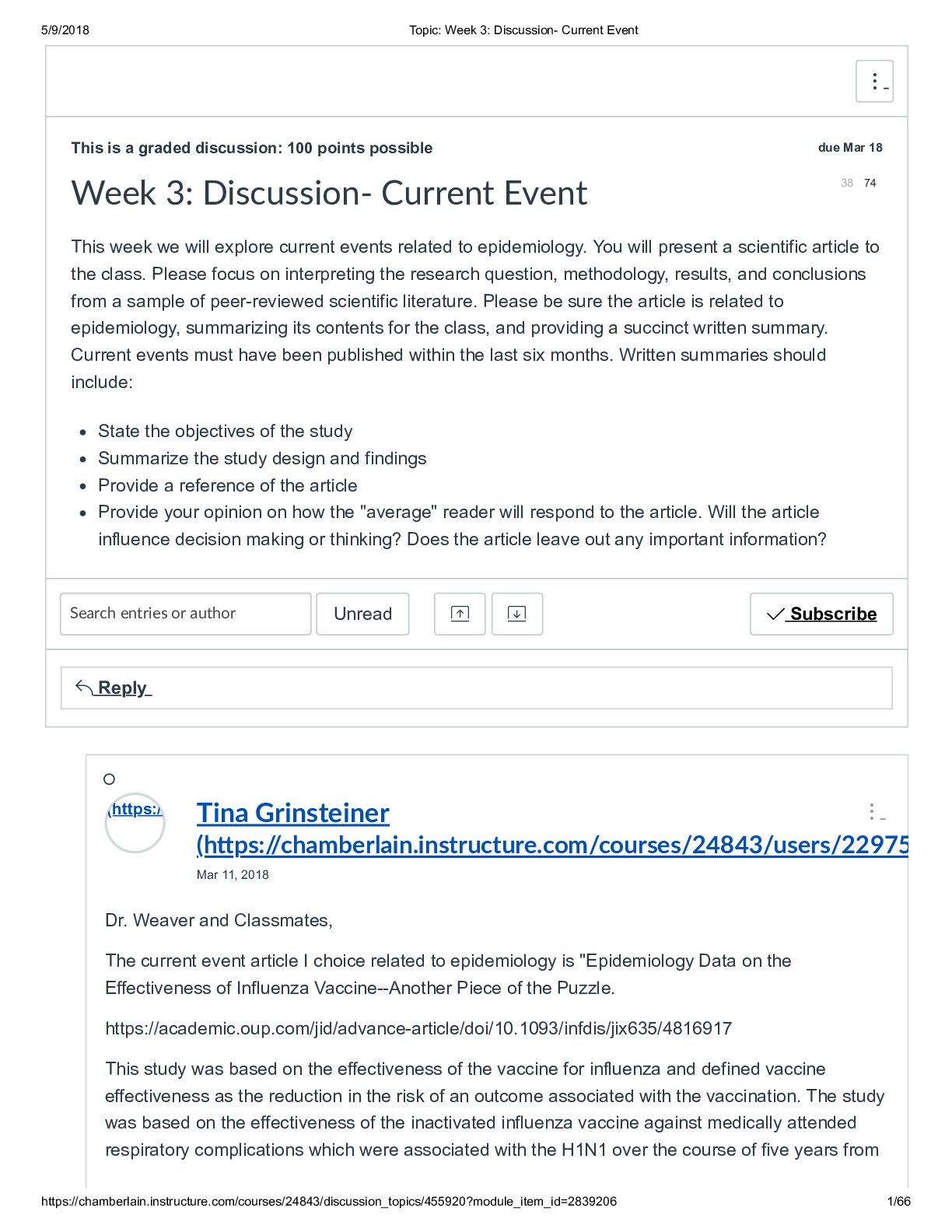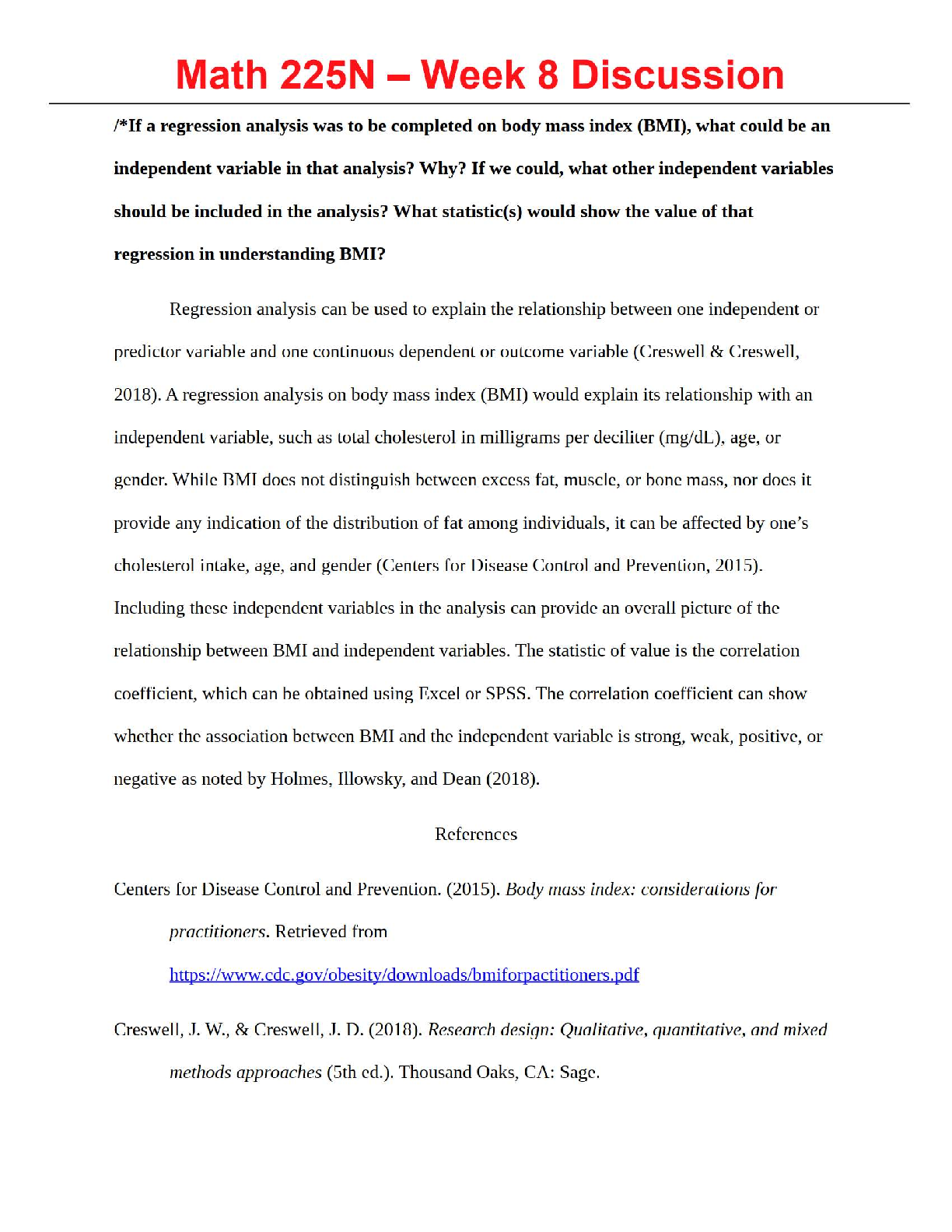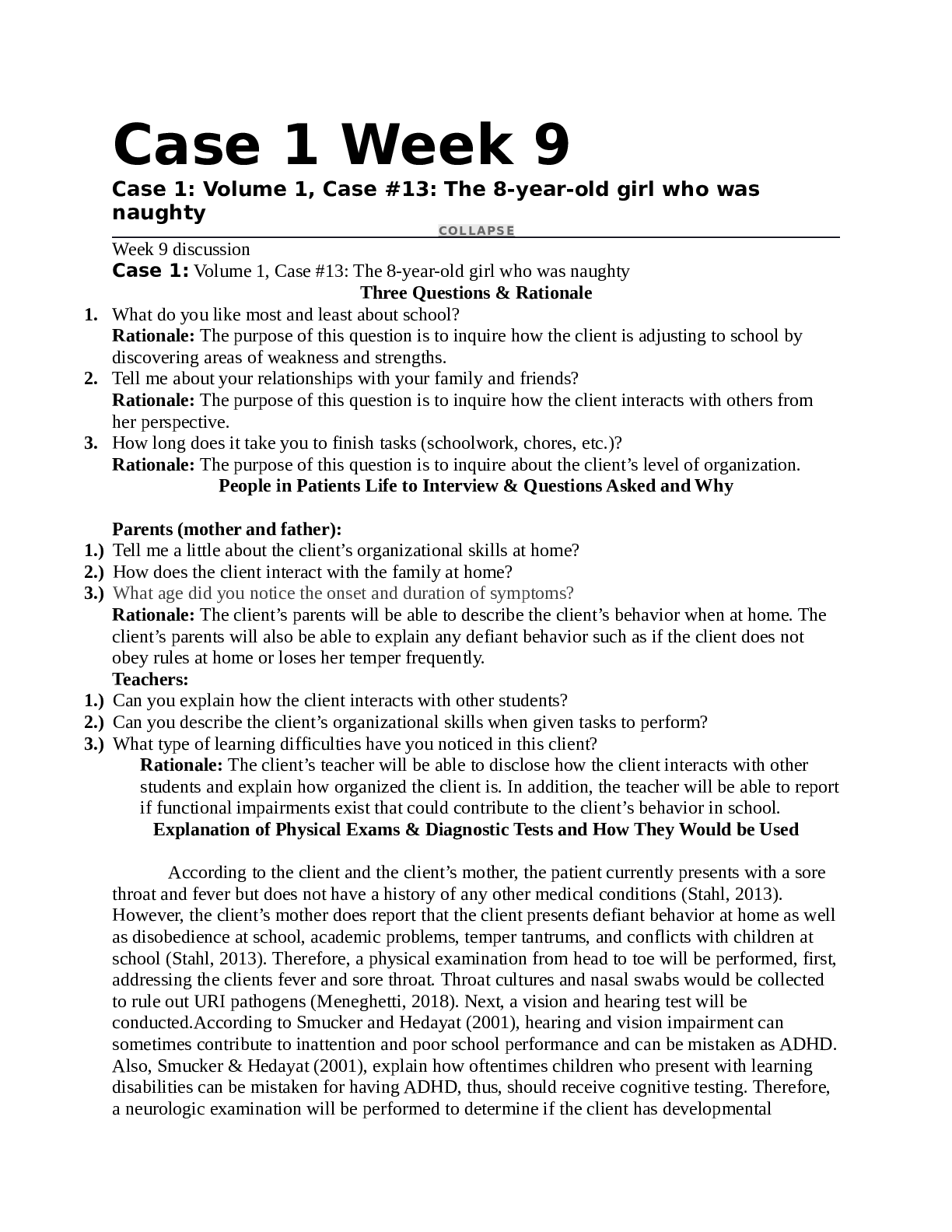Mathematics > DISCUSSION POST > MATH 225N Week 6 Discussion: Confidence Interval (2020) complete solution help (All)
MATH 225N Week 6 Discussion: Confidence Interval (2020) complete solution help
Document Content and Description Below
Thinking of the many variables tracked by hospitals and doctors' offices, confidence intervals could be created for population parameters (such as means or proportions) that were calculated from man ... y of them. Choose a topic of study that is tracked (or you would like to see tracked) from your place of work. Discuss the variable and parameter (mean or proportion) you chose, and explain why you would these to create an interval that captures the true value of the parameter of patients with 95% confidence. Consider the following: How would changing the confidence interval to 90% or 99% affect the study? Which of these values (90%, 95%, or 99%) would best suit the confidence level according to the type of study chosen? How might the study findings be presented to those in charge in an attempt to affect change at the workplace? Follow-Up Post Instructions Respond to at least two peers or one peer and the instructor. Further the dialogue by providing more information and clarification. Hi Prof. B and class, Hi Prof. B and class, You forewarned us about this topic being challenging, well it is. Holmes (2018) defines confidence interval as another type of estimate but, instead of being just one number, it is an interval of numbers. The interval of numbers is a range of values calculated from a given set of sample data, it is likely to include the unknown population parameter (p. 334). In all hindsight, this topic got me thinking. I’m not sure how this is tracked in my facility, but we’ve had more than a few instances of UTI’s with several of our residents and I work in a relatively small skilled nursing facility (SNF). I would like to see how it’s tracked and what are the criteria used to prescribe antibiotics, what can we do to prevent recurring UTI's. We’ve had a few residents that have been sent out to the ER due signs and symptoms, tachycardia, dysuria, change in mental status, confusion, elevated temp, among some of the symptoms exhibited; one of these residents has colonized bacteria despite the use of IV abt. A few others have been treated with oral antibiotics. One of these residents has been prescribed the infectious disease physician antibiotics indefinitely. This study by Rousham, Cooper, Petherick, Saukko, and Oppenheim (2019) found, “overdiagnosis and overtreatment can be understood as a healthcare quality problem”. In this particular study, they examined the use of dipsticks and urine microbiology among adults aged ≥70 years admitted to acute and community hospitals using a retrospective case series review. The target sample size was 250 patient records from two hospitals they surveyed. A total of 4227 admissions of adults aged ≥70 years in 2014/2015 with a UTI prevalence of 18%. The estimated population size of 800 and a 20% prevalence of UTI (95% confidence level, 5% error) a sample size of 119 patient records at each site would be adequate, so their sample size was rounded to 250 patient records. Of the results of the data reviewed, 14 records (4.5%) had missing medical records which left 298 available for analysis. The mean age of the sample was 83.6 (SD 7.25) years, with 70.5% (n=210 female patients). The most prevalent comorbidities in the sample were cardiovascular disease (69.5%, =207), musculoskeletal disease (36.2%, n = 108), cerebrovascular disease (25.2%, n = 75) and diabetes (25.1%, n = 41) (Rousham et al.). This study showed the practices and behaviors and over-prescription of antibiotics. I thought it was interesting the use of dipstick tests vs urine microbiology. In older adults, diagnosis of UTI using dipsticks is advised against because the age-related increase in asymptomatic bacteriuria can cause false-positive results. Guidelines direct against the use of dipstick and recommend the use of urine microbiology only if signs and symptoms are present for the use of prescribing antibiotics. Here in the US, according to the American Geriatric Society, “Applying definite criteria for starting antibiotic therapy in residents of long-term care facilities is likely to reduce inappropriate antibiotic use without jeopardizing patient safety”. There is a minimum criterion that physicians must follow that includes positive urine culture plus at least 1 of the following: • Acute dysuria or acute pain, swelling, or tenderness of the testes, epididymis, or prostate • Fever or leukocytosis plus 1 of the following: acute costovertebral angle pain or tenderness, suprapubic pain, gross hematuria, new or marked increase in incontinence, frequency, or urgency • In the absence of fever or leukocytosis, then 2 of the following symptoms: acute costovertebral angle pain or tenderness, suprapubic pain, gross hematuria, new or marked increase in incontinence, frequency, or urgency Some challenges that contribute to over-prescription of antibiotics the patient is frail and unwell or unable to report signs and symptoms. I apologize for making this post long. Sincerely, Denise C. References: Holmes, A., Illowsky, B., & Dean, S. (2018). Introductory Business Statistics. Houston, TX: OpenStax. Mehta, M. J., & Rowe, T. A. (2015). Infectious diseases. American Geriatrics Society, Inc. Rousham, E., Cooper, M., Petherick, E., Saukko, P., & Oppenheim, B. (2019). Overprescribing antibiotics for asymptomatic bacteriuria in older adults: a case series review of admissions in two UK hospitals. Antimicrobial resistance and infection control, 8, 71. doi:10.1186/s13756-019- [Show More]
Last updated: 3 years ago
Preview 1 out of 3 pages

Buy this document to get the full access instantly
Instant Download Access after purchase
Buy NowInstant download
We Accept:

Reviews( 0 )
$7.00
Can't find what you want? Try our AI powered Search
Document information
Connected school, study & course
About the document
Uploaded On
Sep 21, 2021
Number of pages
3
Written in
All
Additional information
This document has been written for:
Uploaded
Sep 21, 2021
Downloads
0
Views
132


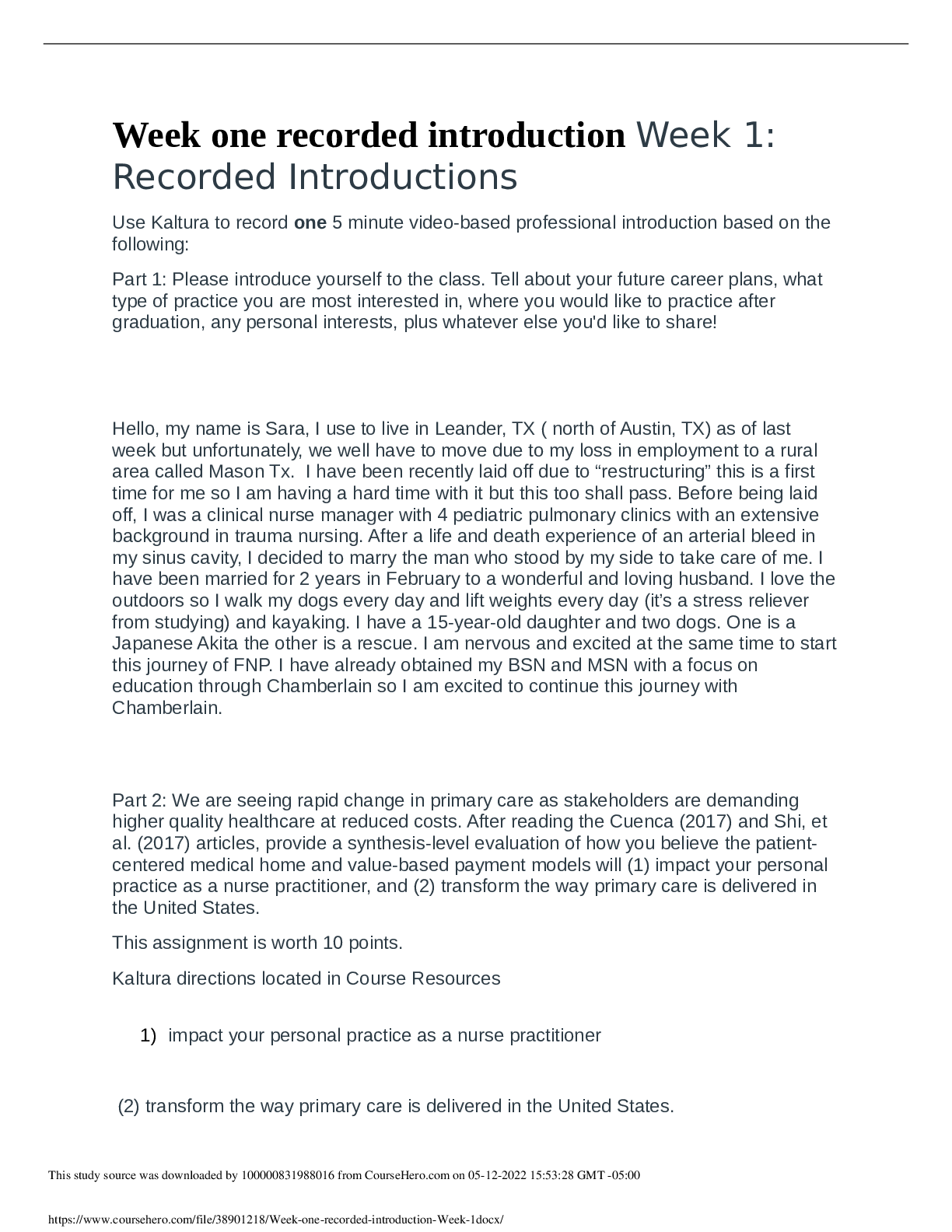



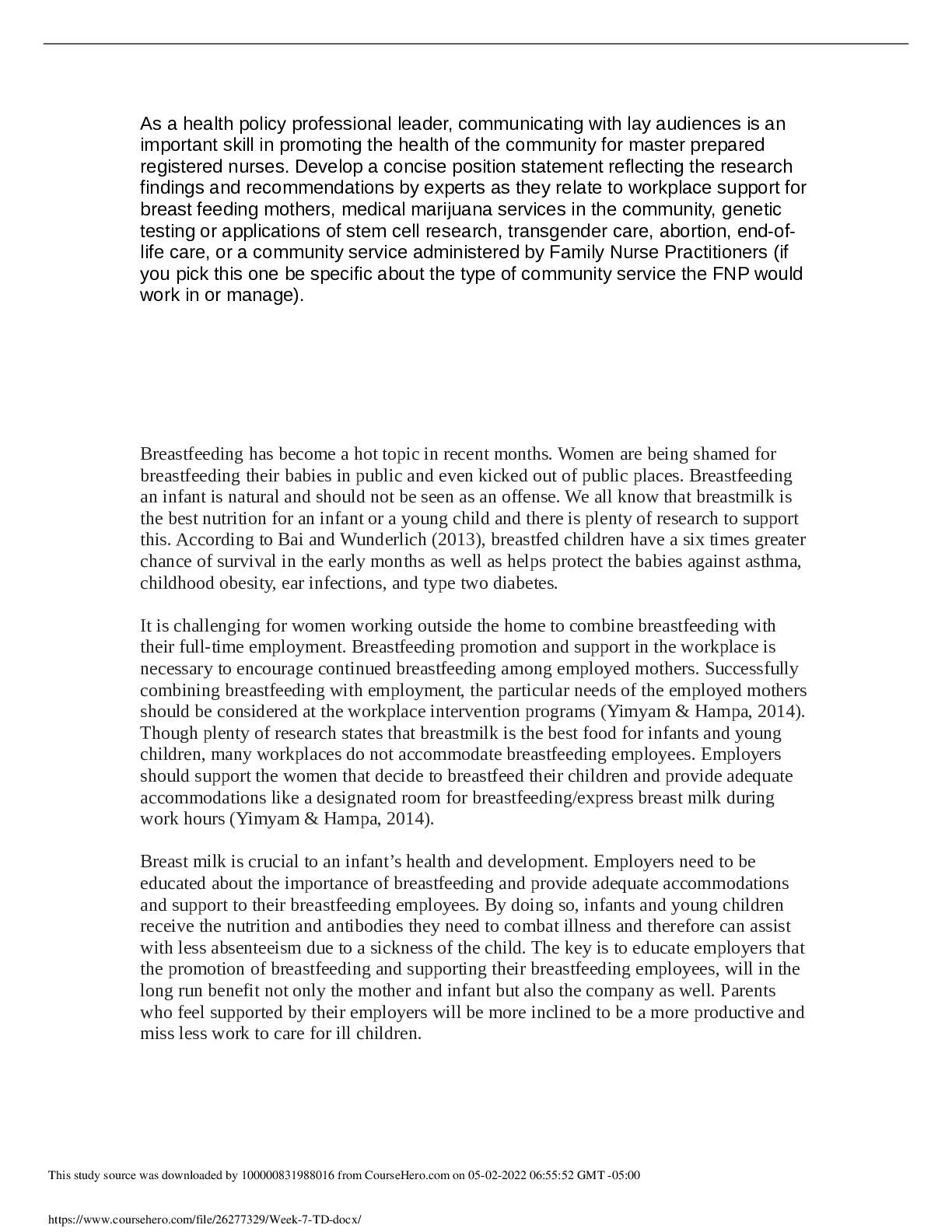
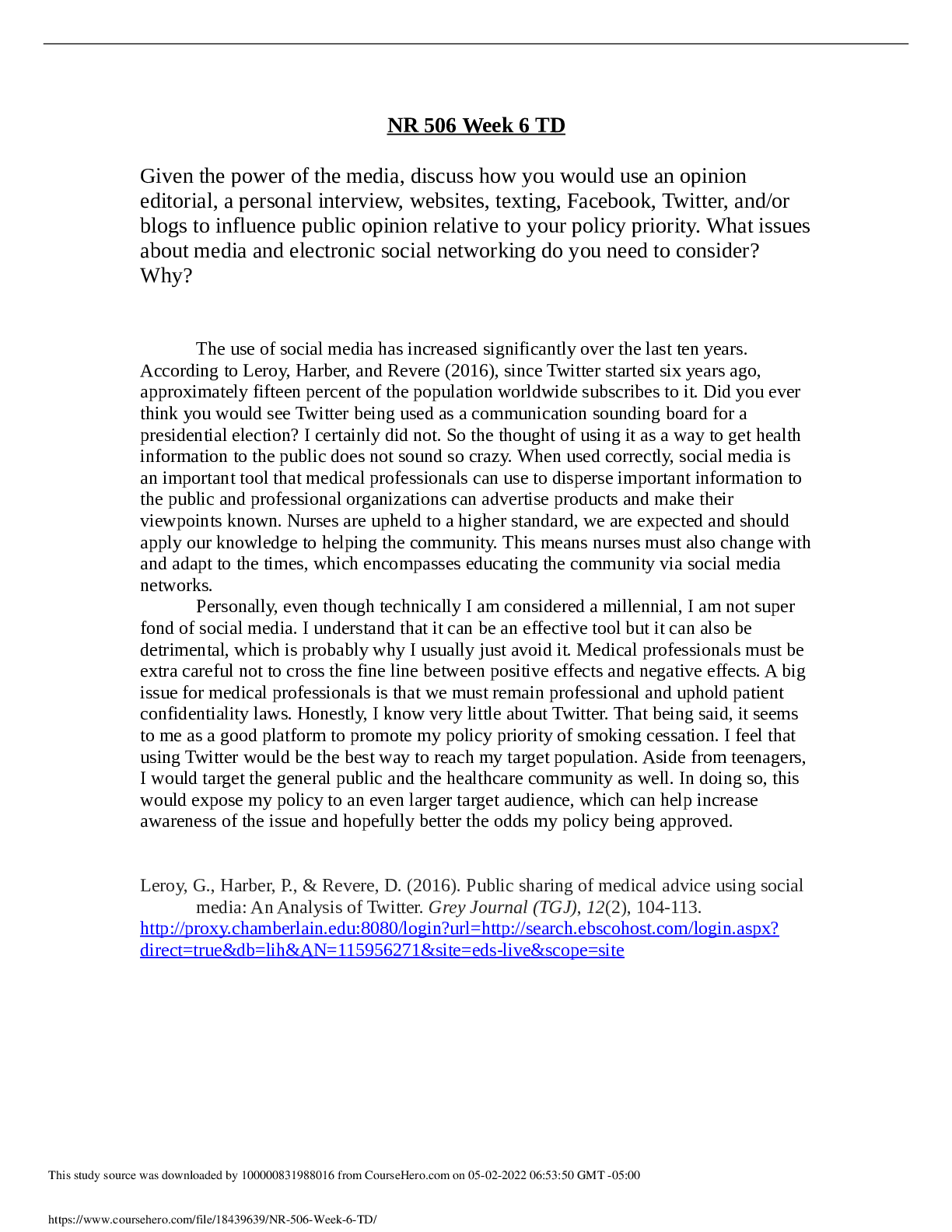
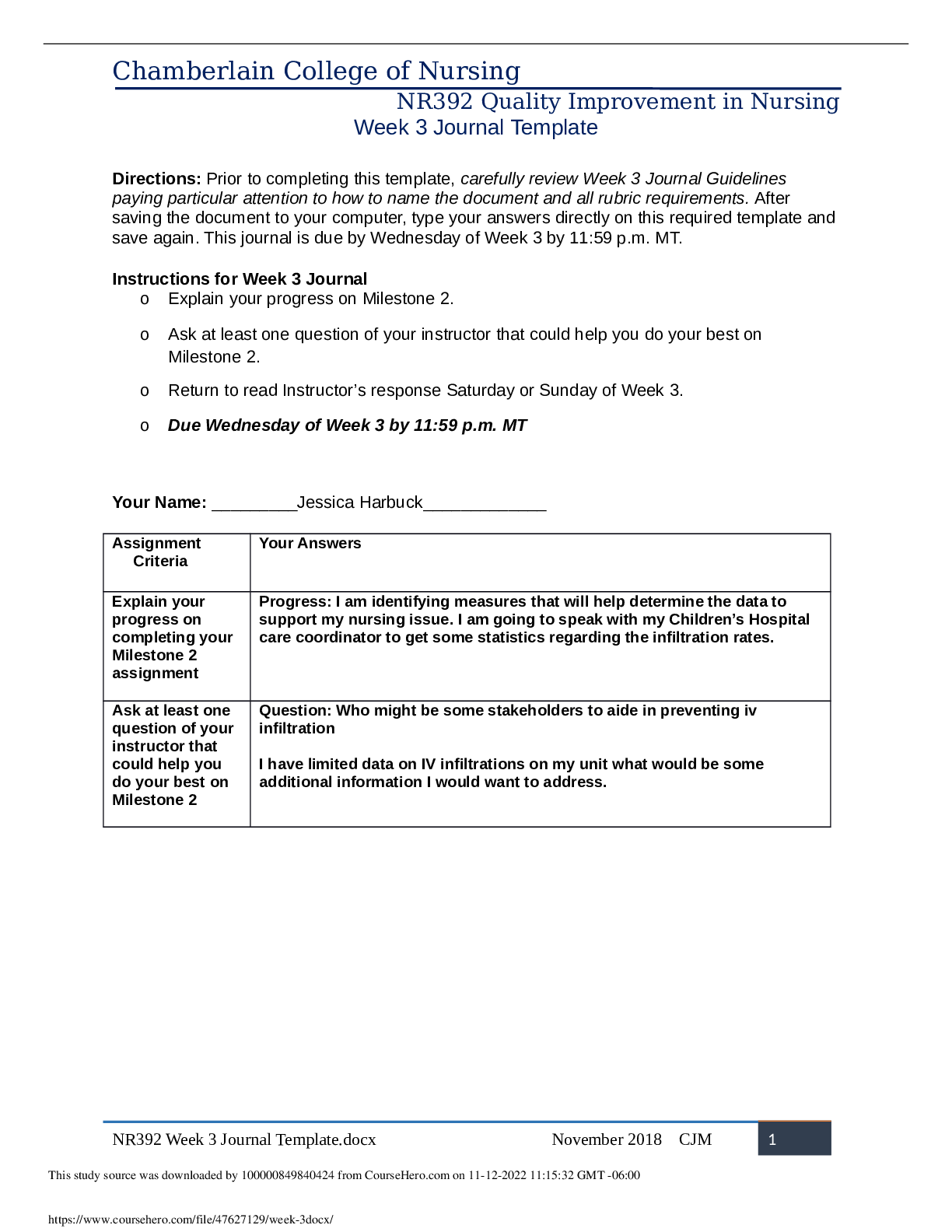

.png)

